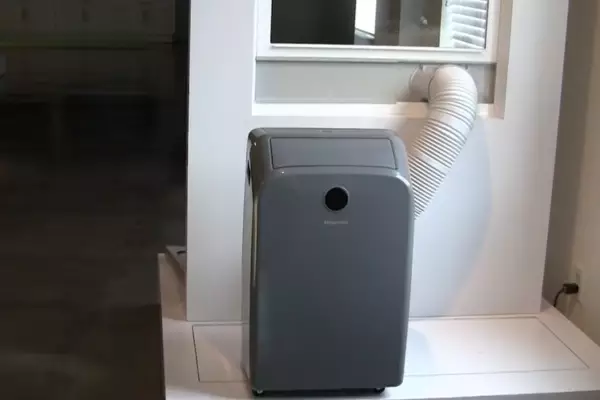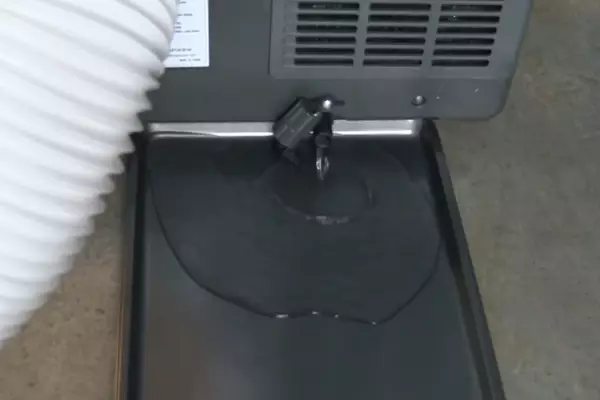Air conditioners are common household appliances designed to make life comfortable, especially in hot weather. However, like all electrical appliances, they occasionally encounter problems. One such issue is the infamous E5 error that users of Hisense air conditioners might encounter.
The E5 error on a Hisense air conditioner signifies a problem with the system. It’s a fault code that generally points towards issues with the temperature sensor, which is critical for the device’s proper operation. This is a crucial piece of information that enables you to act appropriately when the error surfaces.
Knowing the meaning, causes, and solutions for this error is important. It not only empowers you to handle the situation properly but also helps maintain the longevity and efficiency of your Hisense air conditioner.
Contents
The Meaning of E5 Error in Air Conditioners
The E5 error is primarily associated with the malfunctioning of the air conditioner’s temperature sensor. It plays a critical role in the device’s performance as it detects and regulates the cooling process based on the room’s temperature. If it’s faulty, the air conditioner will struggle to work effectively.

Hisense Air Conditioner: A Brief Overview
Hisense is a renowned brand in the home appliances industry. It is known for manufacturing reliable, efficient, and feature-packed air conditioners. Despite their high quality, Hisense air conditioners, like any electronic device, are not immune to occasional hiccups and error codes.
Common Error Codes in Air Conditioners
The E5 Error
The E5 error is typically associated with a faulty temperature sensor in the air conditioning unit. When it malfunctions, the air conditioner struggles to detect the room temperature accurately, causing performance issues.
Other Notable Errors
In addition to the E5 error, there are other error codes that users may encounter, including E1, E2, and E3. Each of these codes signifies a specific problem in the air conditioning unit that needs addressing.
Hisense Air Conditioner E5 Error
Hisense, an established brand in the world of air conditioning units, is known for delivering products that exhibit a high degree of technological sophistication. While generally efficient and reliable, Hisense air conditioners are not devoid of occasional troubles, one of them being the E5 error.
A Glimpse into the E5 Error
When the display panel of a Hisense air conditioner shows the E5 error, it implies an issue with the temperature sensor. This sensor, crucial for the proper functioning of the air conditioning unit, ensures that the cooling mechanism adjusts appropriately to the temperature within the room. Therefore, when this sensor malfunctions, the air conditioner can’t effectively monitor the room temperature, leading to less than optimal cooling.
Importance of Error Codes in Troubleshooting
Error codes act as the first line of defense when it comes to troubleshooting issues with your air conditioner. Each error code denotes a specific problem, allowing you to understand the exact nature of the fault. In the case of the E5 error, it points towards a malfunctioning temperature sensor, guiding your troubleshooting steps towards that direction. Knowing what each code represents simplifies the process of diagnosing the problem and finding an appropriate solution.

The Causes of E5 Error
The E5 error primarily occurs due to an issue with the temperature sensor of the air conditioning unit. However, the exact reason could vary, stemming from multiple sources.
Sensor Issues
The most common cause for the E5 error is a problem with the temperature sensor. This could be due to physical damage from mishandling, a loose connection that prevents the sensor from relaying accurate information, or wear and tear that comes with regular use over a prolonged period.
Circuit Problems
Circuit issues within the air conditioning unit could also give rise to the E5 error. These could be due to various reasons such as an electrical short within the internal circuitry, a power surge that may have caused damage to the electrical components, or poor wiring that results in an inconsistent flow of electricity.
Other Possible Causes
Apart from the sensor and circuit issues, a range of other factors could also trigger the E5 error. These could include an accumulation of dust and debris affecting the sensor’s functioning, a lack of regular maintenance leading to deteriorating unit performance, or even a software glitch that could cause the unit to display an error even when the hardware is functioning properly.
The Effects of E5 Error
The E5 error, while common, can lead to some noticeable consequences if not addressed promptly. Its effects are seen directly on the performance of the air conditioner and its longevity.
Impact on AC Performance
The most immediate impact of the E5 error is on the air conditioner’s performance. Since the temperature sensor can’t relay accurate information, the AC struggles to adjust its cooling function, resulting in inefficient operation. This could manifest as reduced cooling, longer operating times, or fluctuating temperatures.
Potential Long-Term Damage
Ignoring the E5 error is not advisable, as it could lead to severe long-term damage. When the temperature sensor doesn’t work properly, the air conditioner continues to function under stressed conditions. Over time, this could lead to other components also breaking down, escalating repair costs or even necessitating a complete replacement of the unit.
Troubleshooting the Hisense E5 Error
If you notice the E5 error on your Hisense air conditioner, a few simple troubleshooting steps might help identify the root cause of the problem.
Initial Steps
- Start by switching off the air conditioner and unplugging it from the power source. This ensures safety while inspecting the unit.
- Conduct a visual check of the temperature sensor. Look out for any signs of damage or a loose connection that could be causing the issue.
- If you are comfortable with handling electronics, inspect the circuitry for any obvious signs of damage or poor wiring.
Professional Assistance
If the issue remains unresolved even after performing the initial troubleshooting steps, the best course of action is to seek professional help. An HVAC technician will have the necessary tools and expertise to diagnose and fix the problem accurately without causing additional damage to the unit.

Solutions for E5 Error
Addressing the E5 error involves a mix of do-it-yourself fixes and professional assistance, depending on the complexity of the problem.
DIY Fixes
- A simple reset might sometimes do the trick. You can reset the air conditioner by switching it off, unplugging it from the power source, waiting for a few minutes, and then plugging it back in and switching it on.
- If the temperature sensor is accessible and easy to handle, clean it gently with a soft brush or cloth to remove any dust or debris that might be interfering with its operation.
- In case you notice a loose connection, tighten it carefully, ensuring not to damage any other components in the process.
When to Call for Professional Help
While some problems can be resolved with DIY fixes, others require professional intervention. If your attempts to resolve the E5 error are not successful, or if you’re not comfortable handling the internal components of the air conditioner, it’s time to call in the experts. A qualified technician will be able to accurately diagnose the problem and suggest an appropriate solution.
Preventive Measures Against E5 Error
Prevention is always better than cure. By adopting some preventive measures, you can significantly reduce the likelihood of encountering the E5 error.
Routine AC Maintenance
Adopting a regular maintenance routine can go a long way in preventing common air conditioner errors. Regular cleaning, component checks, and prompt repairs can ensure the air conditioner functions optimally, reducing the chances of encountering the E5 error.
Regular Sensor Check
As part of your maintenance routine, make it a point to check the temperature sensor regularly. By spotting any early signs of malfunction, such as inconsistent temperature readings or physical damage to the sensor, you can avoid more serious problems down the line.
Importance of Timely Repairs
Prompt attention to any error codes or performance issues is vital. If the E5 error or any other problem is detected, immediate action can prevent additional damage, ensure efficient operation, and extend the lifespan of the air conditioner.
Frequently Asked Questions
What does E5 mean on my Hisense air conditioner?
The E5 error on a Hisense air conditioner usually indicates a problem with the temperature sensor. This is a key component that regulates the cooling process based on the temperature of the room.
What are the common causes of the E5 error?
The E5 error is typically caused by issues with the temperature sensor, such as damage, a loose connection, or wear and tear. Other causes can include circuit problems, dust accumulation, poor maintenance, or software glitches.
How can I fix the E5 error on my Hisense air conditioner?
Firstly, try basic troubleshooting steps like switching off and unplugging the AC, then checking for visible damage. If the error persists, it might be necessary to call a professional to inspect and fix the issue.
Conclusion
The E5 error on a Hisense air conditioner signifies a malfunction that requires your attention. Armed with the understanding of what this error means, you are well-equipped to take necessary actions promptly.
Preventive measures like routine maintenance and regular sensor checks can help avoid such errors. However, when they do occur, it’s essential to rectify them swiftly to prevent further damage and maintain the optimal performance of your air conditioner.
The E5 error, though common, is manageable when you know what it implies and how to address it. This knowledge is key to preserving the longevity and efficiency of your Hisense air conditioner, ensuring a cool and comfortable environment in your space.

